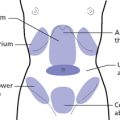 THIRST AND DRINK
THIRST AND DRINK
WHEN WE ASK
I specifically ask about thirst in conditions where a patient has apparent symptoms of Heat but I suspect does not actually have Heat. For example, in cases of rebellious Qi in the Penetrating Vessel, a woman may have a feeling of heat of the face and a red face, but no thirst because there is no actual Heat.
THIRST
Symptoms and Signs, Chapter 70
Intense thirst with profuse urination may indicate diabetes (Case history 32.1).




